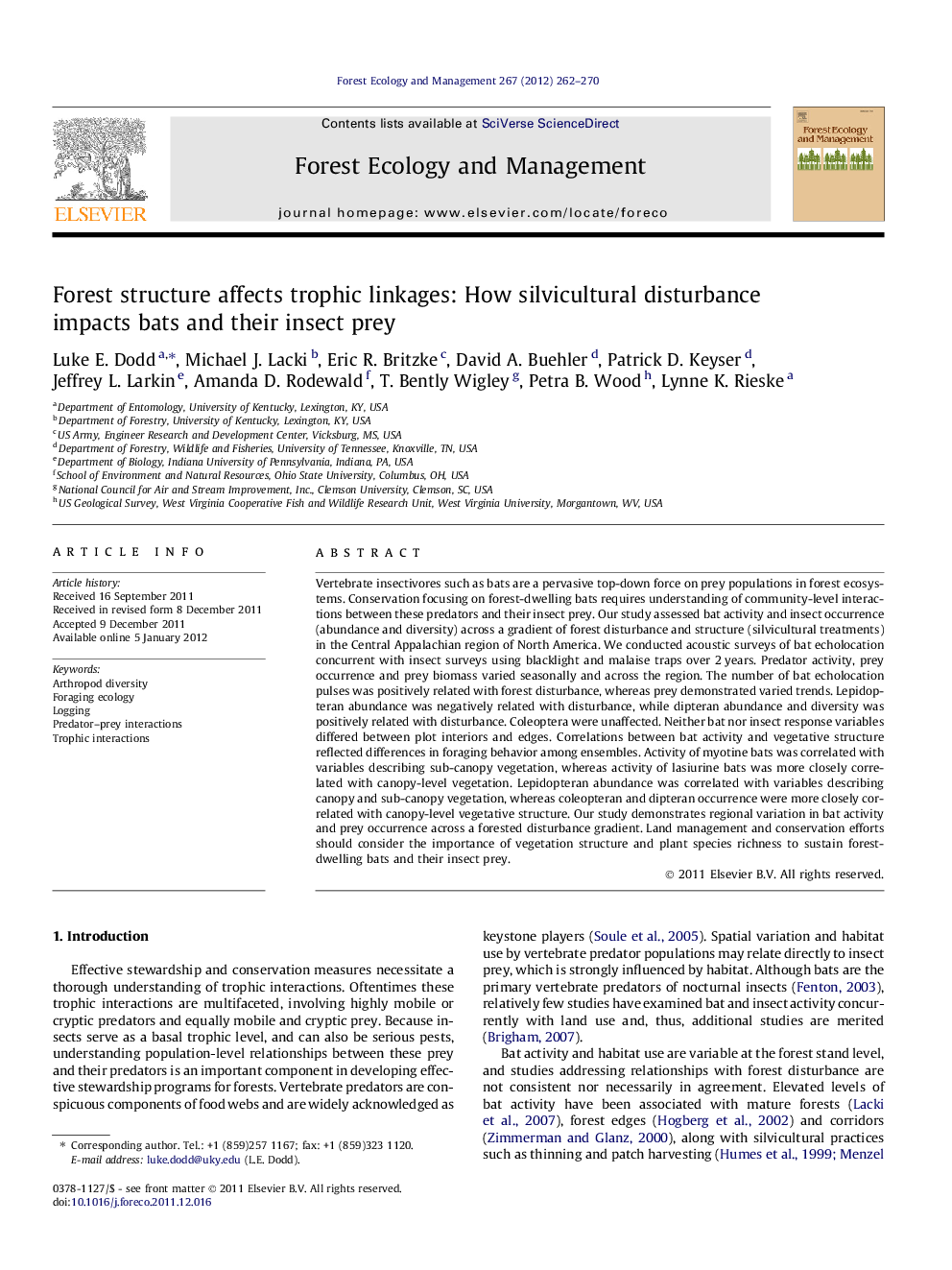| کد مقاله | کد نشریه | سال انتشار | مقاله انگلیسی | نسخه تمام متن |
|---|---|---|---|---|
| 87631 | 159258 | 2012 | 9 صفحه PDF | دانلود رایگان |

Vertebrate insectivores such as bats are a pervasive top-down force on prey populations in forest ecosystems. Conservation focusing on forest-dwelling bats requires understanding of community-level interactions between these predators and their insect prey. Our study assessed bat activity and insect occurrence (abundance and diversity) across a gradient of forest disturbance and structure (silvicultural treatments) in the Central Appalachian region of North America. We conducted acoustic surveys of bat echolocation concurrent with insect surveys using blacklight and malaise traps over 2 years. Predator activity, prey occurrence and prey biomass varied seasonally and across the region. The number of bat echolocation pulses was positively related with forest disturbance, whereas prey demonstrated varied trends. Lepidopteran abundance was negatively related with disturbance, while dipteran abundance and diversity was positively related with disturbance. Coleoptera were unaffected. Neither bat nor insect response variables differed between plot interiors and edges. Correlations between bat activity and vegetative structure reflected differences in foraging behavior among ensembles. Activity of myotine bats was correlated with variables describing sub-canopy vegetation, whereas activity of lasiurine bats was more closely correlated with canopy-level vegetation. Lepidopteran abundance was correlated with variables describing canopy and sub-canopy vegetation, whereas coleopteran and dipteran occurrence were more closely correlated with canopy-level vegetative structure. Our study demonstrates regional variation in bat activity and prey occurrence across a forested disturbance gradient. Land management and conservation efforts should consider the importance of vegetation structure and plant species richness to sustain forest-dwelling bats and their insect prey.
► Bat activity is positively associated with silvicultural disturbance in Appalachia.
► Insect occurrence varied across taxa along this same gradient of disturbance.
► Bat activity most correlated with vegetation parameters describing forest structure.
► Lepidopteran occurrence correlated with canopy and sub-canopy vegetation.
► Vegetation structure and richness must be considered to sustain food webs.
Journal: Forest Ecology and Management - Volume 267, 1 March 2012, Pages 262–270